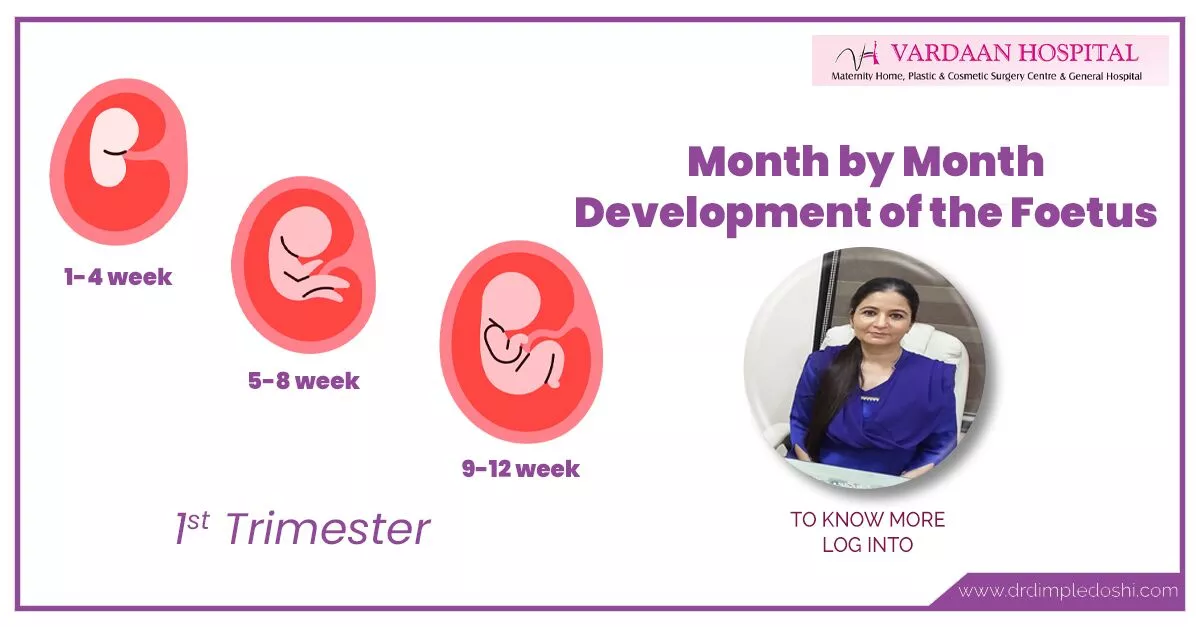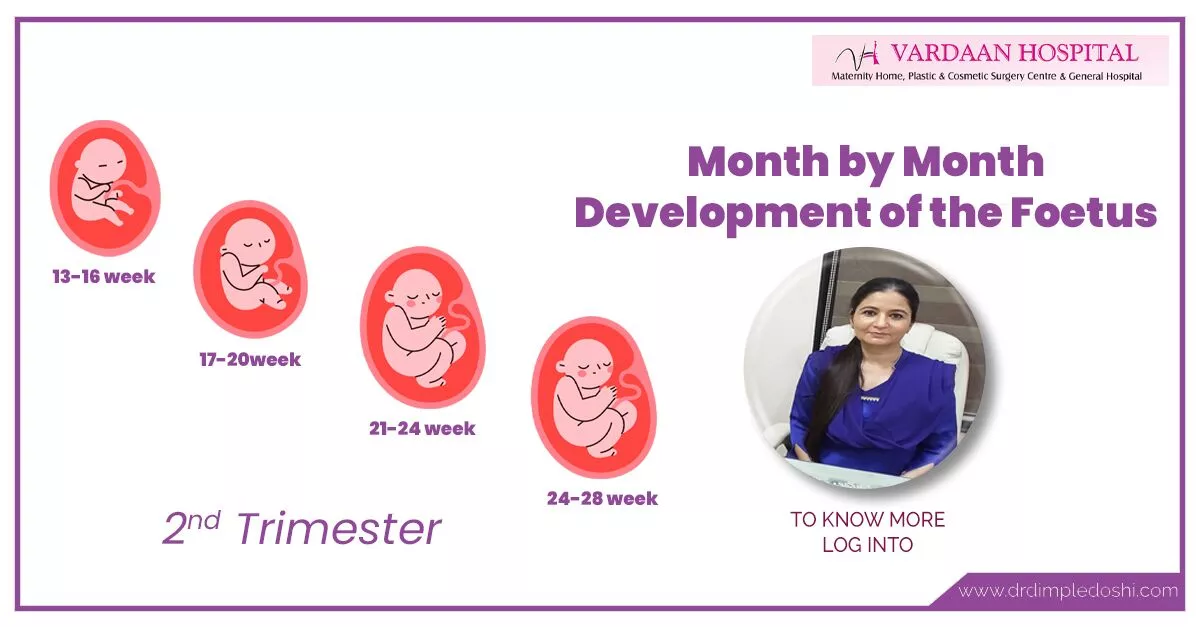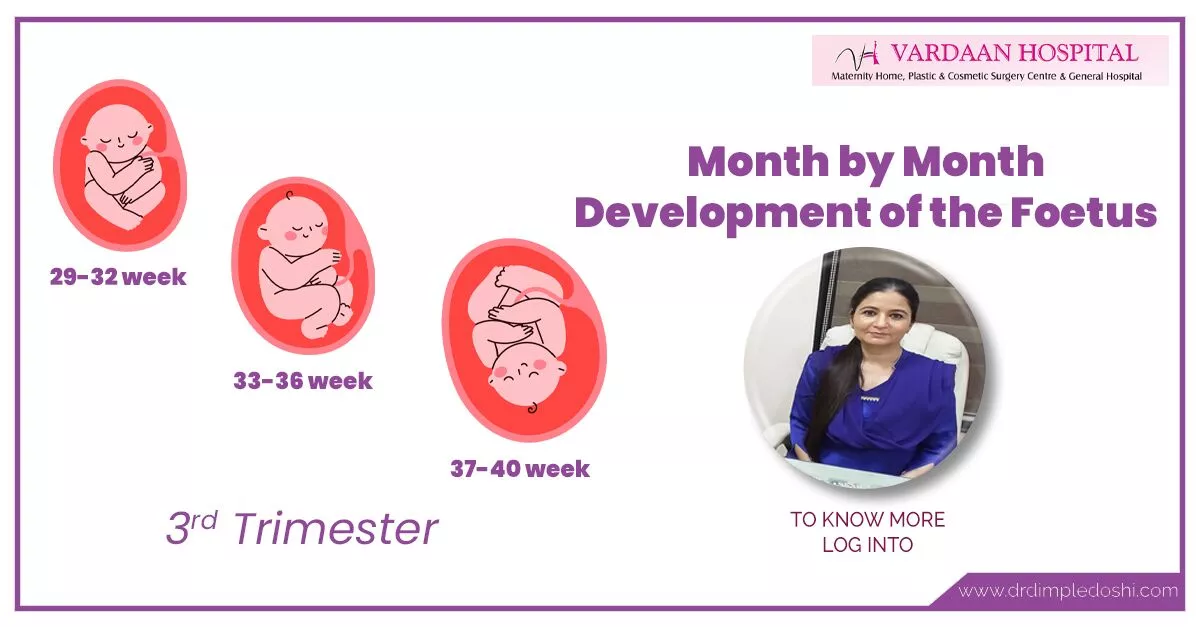Maternity Obstetrics Services in Goregaon West, Mumbai

Embarking on the journey of maternity obstetrics, this exploration delves into the comprehensive realm of women’s health during pregnancy and childbirth. Maternity obstetrics encompasses the vital care and medical expertise provided to expectant mothers, ensuring a safe and healthy pregnancy journey, successful labor, and the delivery of a precious new life.
Maternity Obstetricians specialize in caring for people during preconception, pregnancy, childbirth and the first several weeks postpartum
First Trimester
The first trimester or the first three months of pregnancy is the period from conception to 12 weeks.
Week 1 to 4
- A water tight sac filled with fluid forms around the fertilised egg; it is called amniotic sac
- which helps cushion the growing baby called embryo.
- During this time; placenta also develops. Placenta transfers nutrients from mother to the foetus.
- Primitive face starts forming with large dark circles for eyes. The mouth; lower jaw and throat are developing. Tiny heart tube starts beating.
By the end of the first month; the foetus is about ¼ inch long; smaller than a grain of rice.
Week 5 to 8
- Facial features develop.
- Ear begins developing like a little fold .
- Arms and leg buds start developing. Fingers; toes and eyes are forming.
- Brain; spinal cord and the nervous system is well formed.
- Digestive tract and sensory organs begin to develop.
- Bones start forming.
- At 6 weeks; heart beats can be detected.
By the end of second month; it is called a foetus instead of an embryo; it is about 1 inch long and weighs about 1 gm.
Weeks 9 to 12
- The arms; hands; fingers; feet and toes are fully formed. And the foetus starts doing little things like opening and closing its fists and mouth.
- Finger nails and toe nails are developing. Ears are also developing.
- Teeth are forming under gums.
- Reproductive organs develop but gender is difficult to distinguish on ultrasound.
- The circulatory and urinary systems start developing.
At the end of the third month; the foetus is about 4 inches long and weighs about 30 gm.
As the most critical development of the baby has taken place; your chances of miscarriage drops considerably after 3 months.
 Second Trimester
Second Trimester
The middle trimester of pregnancy is often thought of as the best part of the pregnancy experience as by this time; the morning sickness is gone and the discomfort of the first trimester has faded.
The foetus will start developing the facial features and you may also start to feel movements as the foetus flips and turns in the uterus. The sex of the baby gets confirmed.
Week 13 to 16
Heartbeats may be audible through an instrument your gynaecologist uses ; called doppler.
Fingers and toes are well defined.
Eyebrows; eyelashes ; nails and hair are formed/
Teeth and bones form properly.
The nervous system is starting to function.
The foetus can suck his or her thumb; yawn; stretch and make faces.
The reproductive organs and genitalia are fully developed and the sex of the baby is visible on ultrasound.
By the end of the fourth month; the foetus is about 6 inches long and weighs about 100 gm.
Week 17 to 20
At this stage; you may feel the foetus moving around as the foetus is developing muscles and exercising them. This is called quickening and you can feel it like a flutter.
Hair begins to grow on the head; and the body is covered by soft fine hair called lenugo. This hair protects the foetus and they are usually shed at the end of the first week of baby s life.
The skin is covered with whitish coating with cheesy substance called vernix which is thought to protect the baby from long exposure to amniotic fluid. And this coating is shed just before birth.
By the end of fifth month; the foetus is about 10 inches long and weighs from 300 to 500 gm.
Week 21 to 24
The foetus s skin is reddish in color and wrinkled and the veins are visible through skin.
The finer and toe prints are visible.
The eyes can open.
The foetus responds to sound. You may notice jerking movements if the foetus hiccups.
He baby may survive after 24 weeks if born prematurely at this age with intensive care.
By the end of 6th month; the foetus is about 12 inches long and weighs about 700 gm.
Weeks 25 to 28
The foetus continues to mature and develops fat.
Hearing is fully developed and responds to stimuli including sound and pain.
The amniotic fluid begins to decrease.
If born at this age ; the baby is likely to survive after 7th month.
At the end of 7th month; the foetus is 14 inches long and weighs about 800 gm.

Third Trimester
This is the final part of your pregnancy and you may be tempted to start the countdown thinking and hoping that your due date comes early; but it is this period of pregnancy in which the foetus prepares for birth; gains weight and attains maturity.
Weeks 29 to 32
The baby continues to mature and develops more body fat and continues kicking. The baby can see and hear. Most internal systems are well developed but the lungs may still be immature.
The baby is about 18 inches long and may weigh from 1.8 to 2 kg.
Weeks 33 to 36
The baby continues to grow and mature. Lungs are almost developed.
It can blink; close the eyes; turn the head, grasp firmly and can respond to light and touch.
The baby is about 17 to 19 inches long and weighs from 2.2 to 2.9 or 3.0 kg.
Weeks 37 to 40
The baby is fully mature and you can go in labor anytime.
You may notice that the movements are less as the space is tight and the liquor is also reducing.
And as the body starts to prepare for delivery process; the baby tries to come down in the pelvis and that may make things little uncomfortable for you due to pressure in the pelvis.
The baby may be about 18 to 20 inches long and may weigh from 2.5 to 4 kg.
In conclusion, maternity obstetrics is a cornerstone of women’s healthcare, ensuring the well-being of both mother and child throughout the transformative journey of pregnancy, childbirth, and beyond.
DELIVERY: THE LITTLE BUNDLE OF JOYS IS IN YOUR HANDS.

